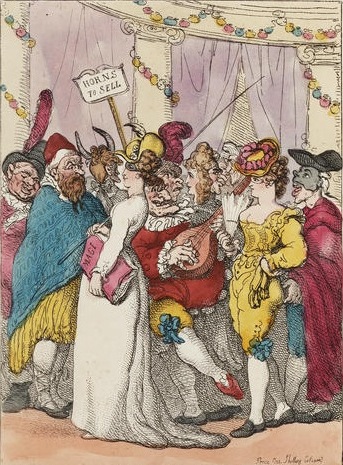 “No one can suppose that a woman of true delicacy will visit a place where she can have no pledge that she will not be associated with the most abandoned of both sexes and where she will be liable to be addressed by strangers in language for which they will feel no responsibility. We can hardly suppose that a considerate man who values the reputation of steadiness and regularity will consent to mingle with the disguised crowd which such an amusement will assemble. Who then does not perceive what kind of society and what kind of intercourse may be expected from a masquerade. Here none will feel that their reputations are at stake. The fear of shame and the restraints of decency which operate so powerfully where people are known will here lose their power. Any characters may be assumed and represented and any manners and sentiments will be tolerated which agree with these characters. None of the company will be considered as speaking in their own persons some will be able to conceal themselves effectually from all their associates under such ciicumstances what may not be said what may not be done. An amusement more destructive of propriety and delicacy of manners more suited to the views and wishes of the unprincipled more favourable to licentious intercourse more fatal to youthful modesty cannot easily be conceived. Perhaps all these evil effects may not be produced and discovered at a single masquerade but they flow naturally and directly from an amusement which brings together people in disguise. The friends of order and morality and es cially the friends of the young are invited and intreated to give their full and open support to our civil fathers in resisting an innovation from which such corruption of maimers may be justly apprehended” –Something, James Fennell, 1809.
“No one can suppose that a woman of true delicacy will visit a place where she can have no pledge that she will not be associated with the most abandoned of both sexes and where she will be liable to be addressed by strangers in language for which they will feel no responsibility. We can hardly suppose that a considerate man who values the reputation of steadiness and regularity will consent to mingle with the disguised crowd which such an amusement will assemble. Who then does not perceive what kind of society and what kind of intercourse may be expected from a masquerade. Here none will feel that their reputations are at stake. The fear of shame and the restraints of decency which operate so powerfully where people are known will here lose their power. Any characters may be assumed and represented and any manners and sentiments will be tolerated which agree with these characters. None of the company will be considered as speaking in their own persons some will be able to conceal themselves effectually from all their associates under such ciicumstances what may not be said what may not be done. An amusement more destructive of propriety and delicacy of manners more suited to the views and wishes of the unprincipled more favourable to licentious intercourse more fatal to youthful modesty cannot easily be conceived. Perhaps all these evil effects may not be produced and discovered at a single masquerade but they flow naturally and directly from an amusement which brings together people in disguise. The friends of order and morality and es cially the friends of the young are invited and intreated to give their full and open support to our civil fathers in resisting an innovation from which such corruption of maimers may be justly apprehended” –Something, James Fennell, 1809.
Contemporary authors of the Regency drama, when they want to put H/h in naughty situations will often set a scene in a masquerade.
Originating from Italian Carnival traditions, notably in the 15th and 16th centuries, it was credited as being introduced to Town by John James Heidegger, a Swiss count who had been in Italian court in the early 1700s.
The era of the masquerade was born in London. The fashion of a semi-public masquerade ball, to which one might subscribe, was inagurated with a first event at Haymarket Opera House. Later, Vauxhall and Raneleagh Gardens would be favorite spots to hold masquerade, with lots of outside and secret spots perfect for masked assignations and other naughty behavior.
Regency era critques sighted masquerades as a “low” and “vulgar” activity not fit for decent men and women, however the events persisted well into the Victorian era. Undoubtedly, the tempation of letting loose society strictures for a magical evening in the pleasure gardens warred with sensibilities until Society, with the Victorian era, became much more restrictive.
Below is a delightful story published in a Regency era magazine that describes the contemporary attitudes for this sort of entertainment.
To read it in original form (and for more sketches of Society Manners, The hermit in London; or, Sketches of English manners [by F. M’Donogh].)










Where is the next chapter? I’m dying to know how it all ends!
Thanks for pointing out my omission, Lenore! In my excitement I ended the post prematurely. Now edited to include the ending, plus a link to the original text for more funny sketches of Society!
Pingback: Recent Historical Posts of Interest | Sharon Lathan